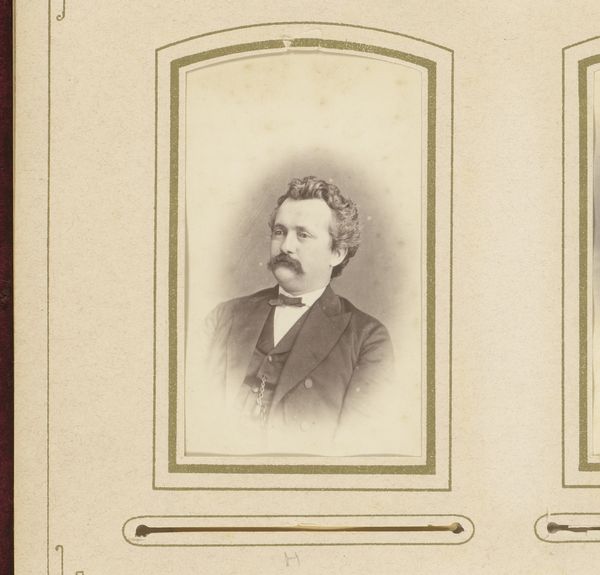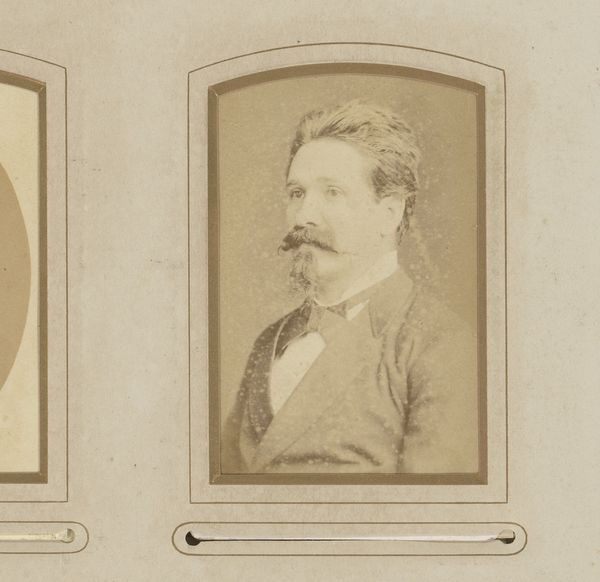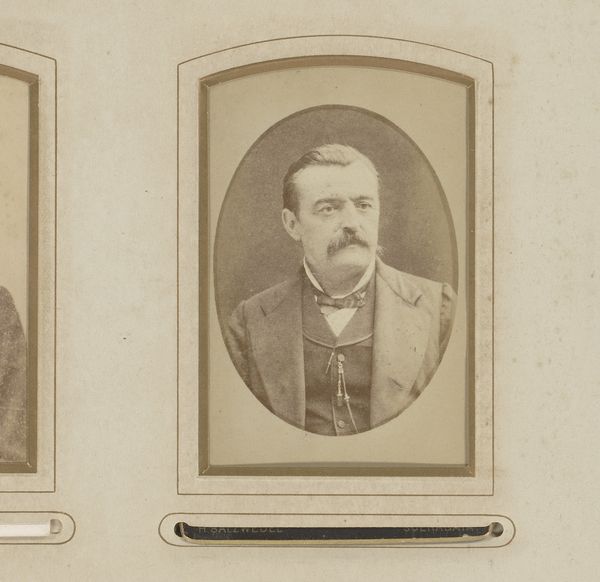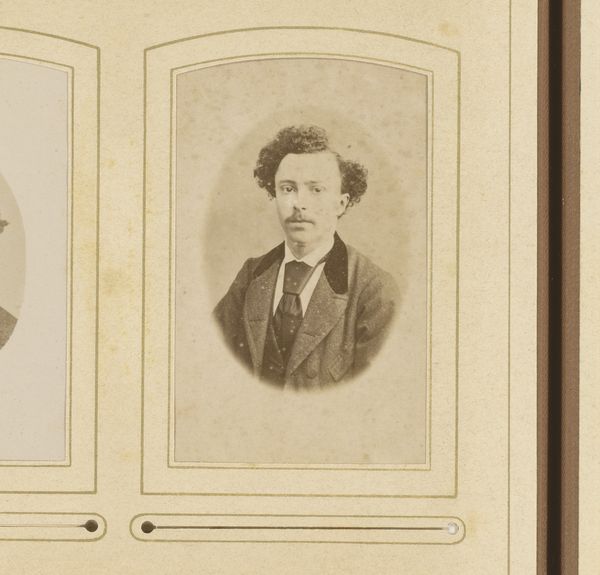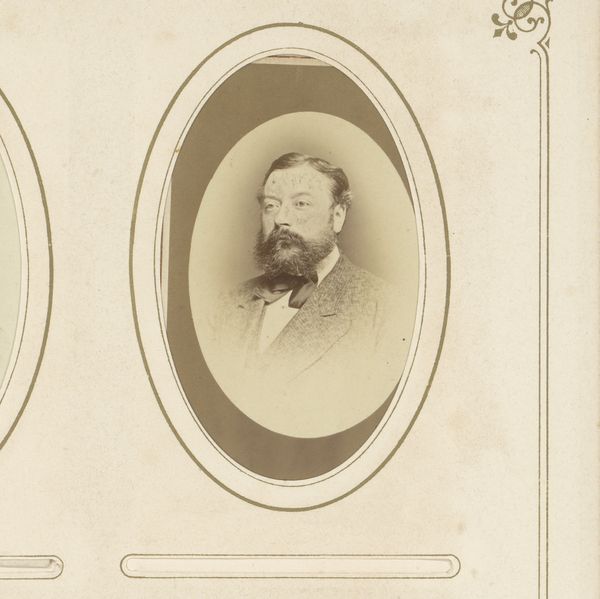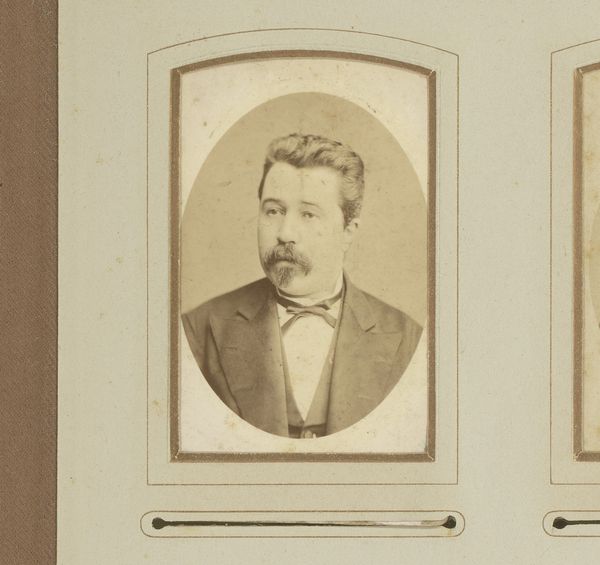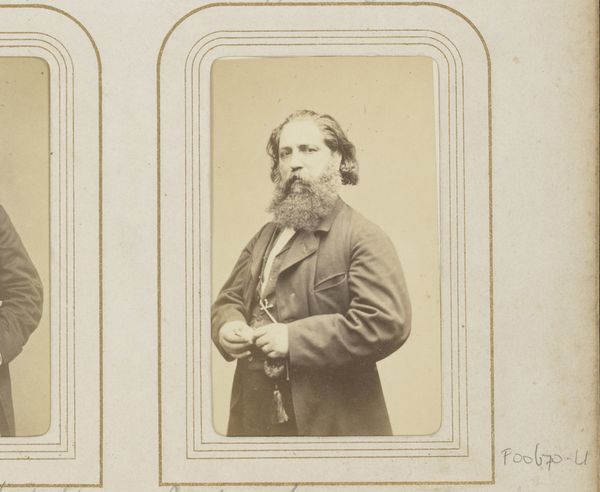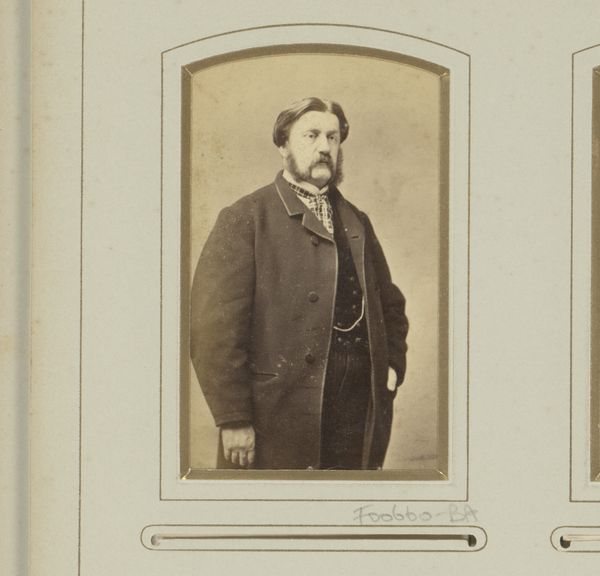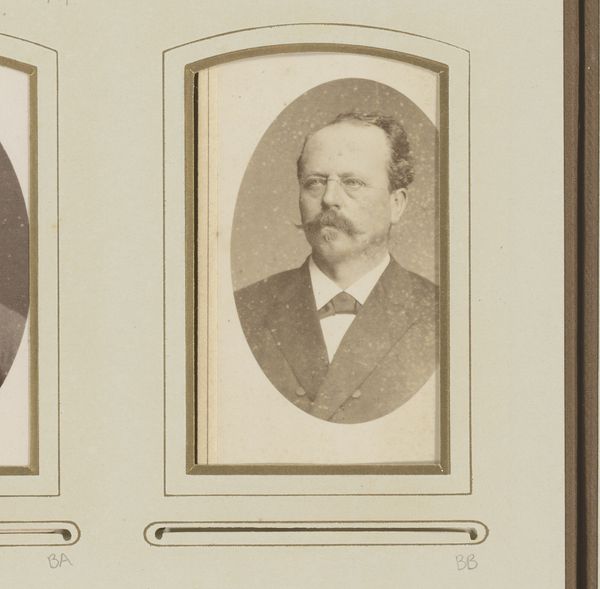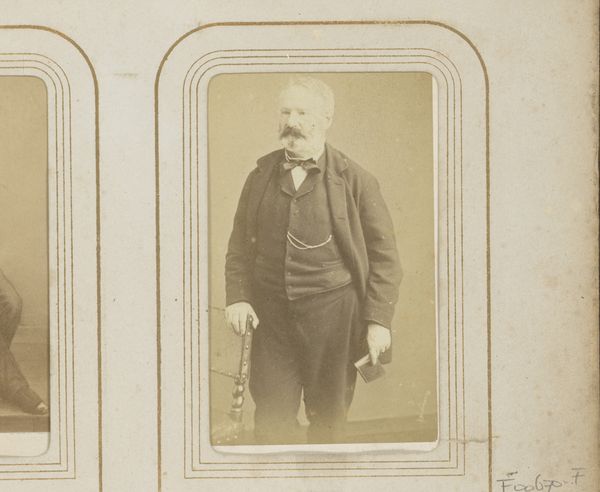
photography
#
portrait
#
photography
#
historical photography
Dimensions: height 84 mm, width 50 mm
Copyright: Rijks Museum: Open Domain
Editor: This photograph, "Portret van een man met snor," which translates to "Portrait of a man with a moustache", was taken sometime between 1880 and 1900. It's a simple portrait, but something about it feels like it's trying to convey an elevated sense of status, yet feels inherently classist somehow... How do you interpret this work? Curator: Well, the photograph does tell a compelling story, doesn't it? Beyond just being a portrait of a man, we must consider how photography itself was emerging as a tool of representation during this period. Who had access to it? And, importantly, who controlled the narrative? Notice his attire, the deliberate pose – these are visual cues signalling bourgeois identity. But can we see it as potentially contesting aristocratic notions of superiority, opening avenues of representation to a broader segment of society? Editor: That's an interesting point, the subversion of traditional status. But what about the implicit power dynamics between the photographer and the sitter? Does that play into our understanding? Curator: Absolutely. Consider that photographic studios were often sites where social hierarchies were reinforced, or sometimes challenged, depending on who was behind the camera and their own agenda, consciously or unconsciously. We can look at similar photographic practices involving colonized peoples and indigenous communities for stark reminders about the uneven distribution of power. How does this photograph fit into a larger history of representation and the gaze? Editor: So, even in a seemingly straightforward portrait like this, there’s a complex web of social and historical factors at play. I wouldn’t have considered that so many theoretical frameworks could be applied to something that appears so simple. Curator: Indeed. Engaging with artworks through a lens that includes identity, social structures, and power enables a richer, more critical engagement. Editor: Thanks for illuminating that, I’ll never look at a historical portrait the same way again!
Comments
No comments
Be the first to comment and join the conversation on the ultimate creative platform.
